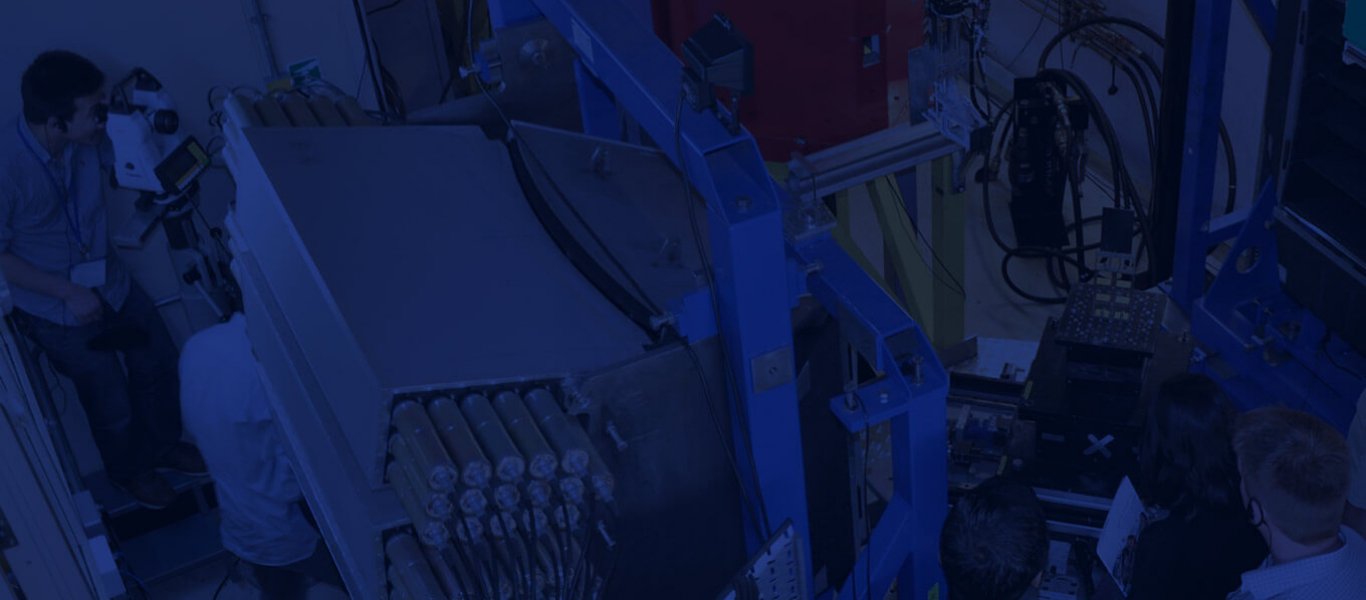Neutron Diffraction
The Neutron Diffraction (ND) technique measures residual stresses deep within a material by detecting the diffractions of an incident neutron beam.
Like the other diffraction techniques, i.e. laboratory X-ray and Synchrotron Diffraction, the diffracted beam of neutrons behaves according to Bragg’s Law enabling the detection of changes in atomic lattice spacing due to stress. The relative changes in spacing are then calibrated using a stress-free material sample (i.e. d0 sample) to calculate absolute stress values. The advantage of using neutrons compared to x-rays is their deeper penetration into engineering materials (i.e. centimetres rather than millimetres for synchrotron x-rays or μm for laboratory x-rays).
There are two main types of Neutron Diffraction technique, monochromatic 2θ Strain Scanning and Time of Flight; the use of which type depends upon the diffraction instrument's neutron source.
Monochromatic 2θ Strain Scanning:
This technique is commonly found at a reactor source and is based on a monochromatic (i.e. single wavelength) neutron beam. It measures changes in the peak diffraction angle of a single diffraction peak, 2θ, relating to a particular lattice spacing, d, due to residual stresses.

Schematic showing the incident and diffracted neutron beam with changing angle 2θ
Differentiating Bragg's law (nλ=2dhkl sinθ) for constant wavelength, λ, gives:

Where Δθ is the peak shift, Δd is the change in lattice spacing, d0 is the lattice spacing of a stress-free sample and 2θ0 is the corresponding angular position of diffraction peak for the stress-free sample.
The strain in the hkl set of planes can be calculated as:

Time of Flight:
A spallation source produces neutron beams of varying wavelengths/energies in pulses at time t0. The netron beams have different velocities, with energetic neutrons travelling the fastest, and can hence be discriminated by their time of flight (or arrival) at the detector. Since all wavelengths are present, the detectors can be placed at 90° to ensure a cuboidal gauge volume, unlike Synchrotron Diffraction. By monitoring the incident/diffracted wavelength at constant Bragg angle, θ, the lattice spacing can be determined. Differentiating Bragg's law for constant θ:

where Δλ is the change in wavelength and λ0 is the wavelength corresponding to the stress-free sample. The strain can be calculated as:

Complete or partial diffraction spectrums can be obtained from each measurement point. The diffraction profiles are then analysed using multiple peak fitting (e.g. Pawley or Rietveld refinements) to provide lattice parame-ters α and α0 for the stressed and stress-free material.

Typical time-of-flight diffraction spectrum (with Pawley fitting).
From the strains measured using either type of ND technique Hooke's law can then (under certain assumptions) be used to calculate the stress components using bulk elastic constants for the multiple reflections, for example:

Using either type of ND technique it is possible to obtain diffracted intensity from only a small gauge volume (e.g. 1 - 10mm3) from deep within a sample by restricting the irradiated region and field of views of the detectors with slits or radial collimators.
Uni-axial or bi-axial residual stresses are measured as standard by the ND technique, but by rotating the component tri-axial (i.e. σxx, σyy and σzz) residual stresses can also be measured with nominal ac-curacies of ±30MPa in steel.
Advantages of the Neutron Diffraction Technique:
- “Non-destructive” technique (although d0 samples may need to be extracted or beam access windows cut);
- Good penetration depths – up to 60mm in steel, 100mm in aluminium (total beam path lengths);
- Tri-axial residual stress measurements (i.e. σxx, σyy and σzz), including stress gradients;
- High magnitude residual stresses are measured accurately;
- Complex shapes can be measured, although beam access windows may need to be cut;
- Indifferent to surface finish;
- Nominal accuracy: 10MPa – Aluminium, 30MPa – Steel, 15MPa – Titanium;
- Macro and micro residual stresses measured.
Disadvantages of the Neutron Diffraction Technique:
- Laboratory based measurements at specialist facilities;
- Only applicable to crystalline materials;
- Accuracy seriously affected by grain size and texture;
- Specimen size restricted (volume and weight);
- Not suitable for surface measurements;
- Very long lead times before measurement unless beam time paid for commercially.
References & Further Reading:
- Noyan, I. C., and Cohen, J. B., “Residual Stress Measurement by Diffraction and Interpretation”, Springer-Verlag, New York Inc., 1987.
- Fitzpatrick, M. E., and Lodini, A., “Analysis of Residual Stress by Diffraction using Neutron and Synchrotron Radiation”, Taylor and Francis, London, 2003.
- Pawley, G. S., “Unit-cell refinement from powder diffraction scans”, J. Applied Crystallography, 14, 357-361, 1981.
- Daymond, M.R., Bourke, M.A.M., and Von Dreele, R.B., “Use of Rietveld refinement to fit a hex-agonal crystal structure in the presence of elastic and plastic anisotropy”, J. Applied Physics, 85 (2), pp. 739–747, 1999.
- ISO/TS 21432:2005, “Non-destructive testing -- Standard test method for determining residual stresses by neutron diffraction”, 2005.




